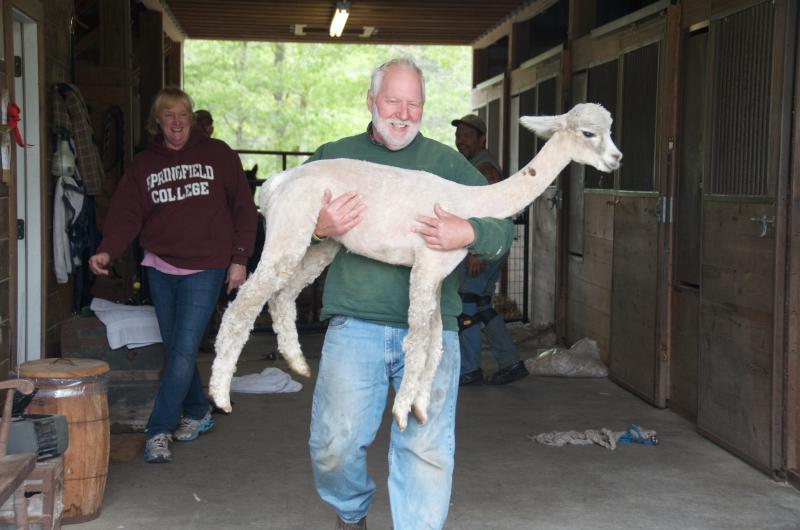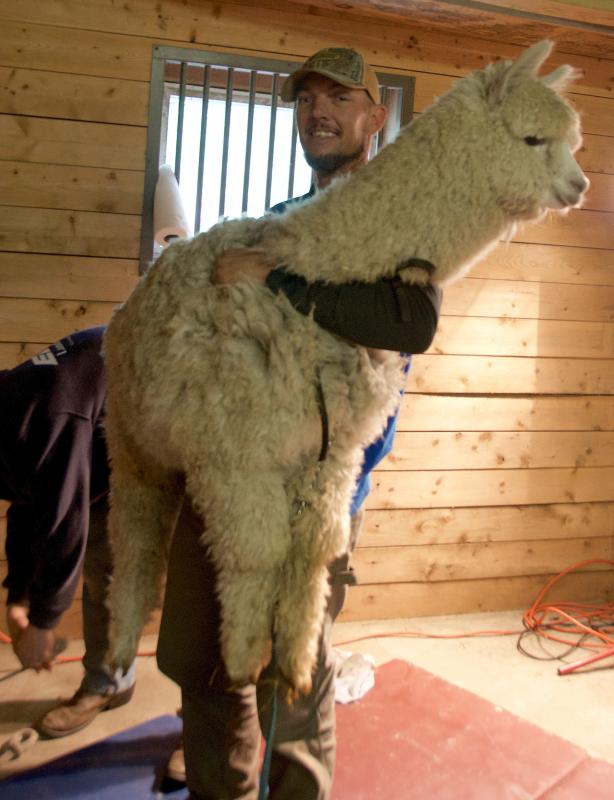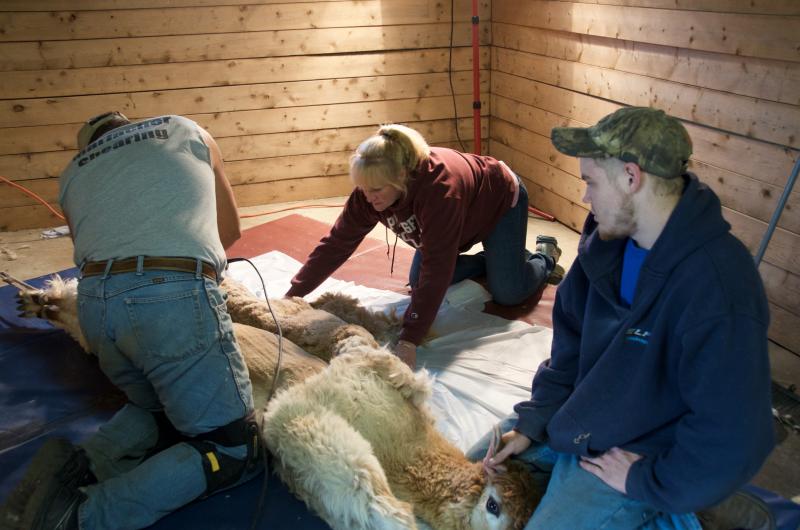Spring shearing! Sippican River Farm's alpaca get rid of winter coat
For alpaca, a visit from Mariacher Shearing Services is sort of akin to a trip to the dentist. They don’t particularly like it, but they feel refreshed afterwards.
Or as Mariacher says, “It is kind of like a day at the spa.”
The professional shearer visited Bronie and Cheryl Rozenas at Rochester's Sippican River Farm on Wednesday for the annual shearing of their alpaca herd.
The process isn’t pretty, but it gets the job done without hurting the animals. Mariacher uses ropes to secure the animal’s legs, and with the help of his two assistants, he lays each alpaca down. With kneepads strapped to his legs, Mariacher gets to work, gently and deftly shearing the thick fibers that have kept the animal warm all winter.
|
Jay Mariacher and his shear tattoo. Photo by: Georgia Sparling |
As one helper keeps the alpaca from wiggling, Mariacher starts cutting off the blanket, the fur around the alpaca’s trunk. The trick is to get as much as possible in the first cut, resulting in longer, higher quality fibers.
The Rozenas stuff the fluff into bags to turn into yarn, mittens, socks and other warm items they sell throughout the year.
Also during the process, Mariacher and his assistants file down the animal’s teeth if they have begun to protrude above its toothless upper gums. Otherwise, it becomes difficult for the animal to eat its main diet of grass and hay, said Mariacher.
He gets it all done in about seven minutes.
A sheep shearer for 35 years, Mariacher never wanted to add alpacas to his skill set.
“The first time I saw them do this, I felt so bad,” he said.
Plus, the animals’ long necks and legs make shearing more complicated.
“It takes a lot more people, a lot more equipment. It’s a lot more involved,” said Mariacher, who has 60 sheep at his home in New Hampshire.
He was finally convinced by a friend to try shearing alpaca.
“The first year I did 150, now we’re pretty close to 5,000 a year between March and July,” Mariacher said. “I just kind of got good at it.”
That is kind of an understatement. For the past several years, Mariacher has won the master class at the North American Alpaca Shearing  contest. Judging is based on the quality of the blanket, how the alpaca looks afterward and speed.
contest. Judging is based on the quality of the blanket, how the alpaca looks afterward and speed.
Mariacher’s best time is 4 minutes 50 seconds. He also teaches others how to properly shear alpaca, including his assistants. James Ross of Connecticut owns his own Alpaca and has traveled with Mariacher for two months. J. Fifield joined the shearing service a month ago and hopes to start his own business in his home state of New Mexico.
In the past 10 years, Mariacher said he’s come against his share of criticism from those who think shearing is cruelty to animals. But covered in pounds of fur, he says alpaca can’t cool off when the weather is hot. He has seen some unshorn alpaca die from overheating.
“It may be seven minutes of inconvenience for them, but it saves their lives,” said Mariacher.
Plus, he enjoys sharing stories from his experiences as he travels through New England and areas of the South.
“I like going out and meeting folks and seeing different parts of the country,” he said.



















